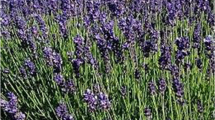Abstract
The history of use, botanical identification, and known chemical constituents of Justicia pectoralis (Acanthaceae), one of the South American hallucinogens, are reviewed.
Resumen
A história do uso, identificação botânica, e constituintes químicos conhecidos deJusticia pectoralis (Acanthaceae), uma das plantas halucinógenas sul-americanas, são revistos.
Similar content being viewed by others
References
Barker, J. P. 1953. Memoria sobre la cultura de los Guaika. Bol. Venez. 1:433–199.
Becher, H. 1960. Die Surará und Pakidái. Zwei Yanonami-Stämme in Nord-West Brasilien. Mitt. Mus. Völkerk. u. Vorgesch. Hamburg 26:1–138.
Biocca, E. 1966. Viaggi tra gli Indi—Alto Rio Negro-Alto Orinoco. Consiglio Naz. Ric, Rome 2: 235–239.
Carias-Brewer, C., and J. A. Steyermark. 1976. Hallucinogenic snuff drugs of the Yanomamo Caburiwe-Teri in the Cauaburí River, Brazil. Econ. Bot. 30:57–66.
Chagnon, N. A. 1968. Yanomamo, the fierce people. Holt, Rinehart and Winston, New York. [1st ed. (1968); 2nd ed. (1977); 3rd ed. (1983)]
—, P. LeQuesne, and J. M. Cook. 1970. Algunos aspectos de uso de drogas, comercio y domesticación de plantas entre los indígenas yanomamo de Venezuela y Brasil. Acta Ci. Venez. 21:186–193.
—, —, and —. 1971. Yanomamo hallucinogens: anthropological, botanical and chemifindings. Curr. Anthropol. 12:72–74.
De Smet, P. A. G. M. 1985a. Ritual enemas and snuffs in the Americas. Latin Am. Studies, Centro Stud. Documentación Latinoamer., Amsterdam.
— 1985b. Snuiven en lavementen in Indiaanse Rituelen. Cooperatieve Apothekers Vereeniging, Utrecht. [54–58]
Emboden, W., Jr. 1979. Narcotic plants. Rev. and enlarged ed. Macmillan, New York.
Hegnauer, R. 1964. Chemotaxonomie der Pflanzen. Vol. 3. Birkhauser Verlag, Basel. [46]
Lizot, J. 1985. Tales of the Yanomami. Cambridge University Press, Cambridge, England. Translated from French: Le Cercle des Feux —Faits et Dits des Indiens Yanomami. Editions du Seuil, Paris (1976).
Macrae, W. D., and G. H. N. Towers. 1984.Justicia pectoralis: a study of the basis for its use as a hallucinogenic snuff ingredient. J. Ethnopharm. 12:93–111.
Prance, G. T. 1972. Ethnobotanical notes from Amazonian Brazil. Econ. Bot. 26:221–237.
Richardson, P. M. 1966. The encyclopedia of psychoactive drugs, flowering plants: magic in bloom. Chelsea House Publishers, New York. [88, 93-94]
Salathé, G. 1932. Les Indiens Karimé. Rev. Inst. Etnol. Univ. Tucuman 2:297–316.
Schultes, R. E. 1967. The botanical origins of South American snuffs. Pages 291–306in D. H. Efron, B. Holmstedt, and N. S. Kline, eds., Ethnopharmacologic search for psychoactive drugs. Public Health Service Publ. 1645, Govt. Printing Office, Washington, DC [Reprint, Raven Press, New York, 1979]
— 1970. The botanical and chemical distribution of hallucinogens. Annual Rev. P1. Physiol. 21:571–594.
— 1984. Fifteen years of study of psychoactive snuffs of South America: 1967–1982 a review. J. Ethnopharmacol. 11:17–32.
— 1987. Coca and other psychoactive plants: magico-religious roles in primitive societies of the New World. Pages 212–249. S. Fisher, A. Raskin, and E. H. Uhlenhuth, eds., Cocaine: clinical and behavioral aspects. Oxford University Press, New York.
—, and N. R. Farnsworth. 1980. Ethnomedical, botanical and phytochemical aspects of natural hallucinogens. Bot. Mus. Lean. 28:123–214.
—, and A. Hofmann. 1973. The botany and chemistry of hallucinogens. Charles C. Thomas Publisher, Springfield, II. [76, 191-194] [2nd ed. (1980) 126, 128, 306-309]
—, and B. Holmstedt. 1968. De plantis toxicariis e Mundo Novo tropicale commentationes II. The vegetal ingredients of the myristicaceous snuffs of the northwest Amazon. Rhodora 70: 113–160.
Seitz, G. J. 1965. Einige Bemerkungen zur Anwendung und Wirkungsweise des Epena, Schupfpulvers der Waika-lndianer. Etnolog. Stud. 28:117–130.
— 1967. Epena, the intoxicating snuff powder of the Waika Indians and the Tucano medicineman, Agostino. Pages 315–338in D. H. Efrom, B. Holmstedt, and N. S. Kline, eds., Ethno-pharmacologic search for psychoactive drugs. Public Health Service Publ. 1645, Govt. Printing Office, Washington, DC. [Reprint, Raven Press, New York (1979)]
Smole, W. J. 1976. The Yanomama Indians—a cultural geography. University of Texas Press, Austin. [24]
Stafford, P. 1983. Psychedelics encyclopedia. Revised ed. J. P. Tarcher, Los Angeles. [321]
Wassén, S. H. 1965. The use of some specific kinds of South American Indian snuff and related paraphernalia. Etnol. Stud. 28:1–116.
-, 1966. Om några Indianska droger och speciellt om snus samt tillbehor. Etnograf. Museet Aarstryck 1963–1966:97–140.
Wilbert, J. 1963. Indios de la región Orinoco-Ventuari. Monogr. 18, Fundación La Salle de Ciencias Naturales, Caracas.
Zerries, O. 1960. Medizinmannwesen und Geisterlaube der Waika Indianer des oberen Orinoco. Etnolog., n.f. 2:485–507.
— 1964. Waika: die Kulturgeschichtliche Stellung der Waika-Indianer des Oberen Orinoco im Rahmen der Volkerkunde Südamerikas. Part V (Genussmittel). Klaus Renner Verlag, Munich.
Author information
Authors and Affiliations
Rights and permissions
About this article
Cite this article
Schultes, R.E. De plantis toxicariis e mundo novo tropicale commentationes XXXVI.Justicia (Acanthaceae) as a source of an hallucinogenic snuff. Econ Bot 44, 61–70 (1990). https://doi.org/10.1007/BF02861067
Received:
Accepted:
Published:
Issue Date:
DOI: https://doi.org/10.1007/BF02861067




